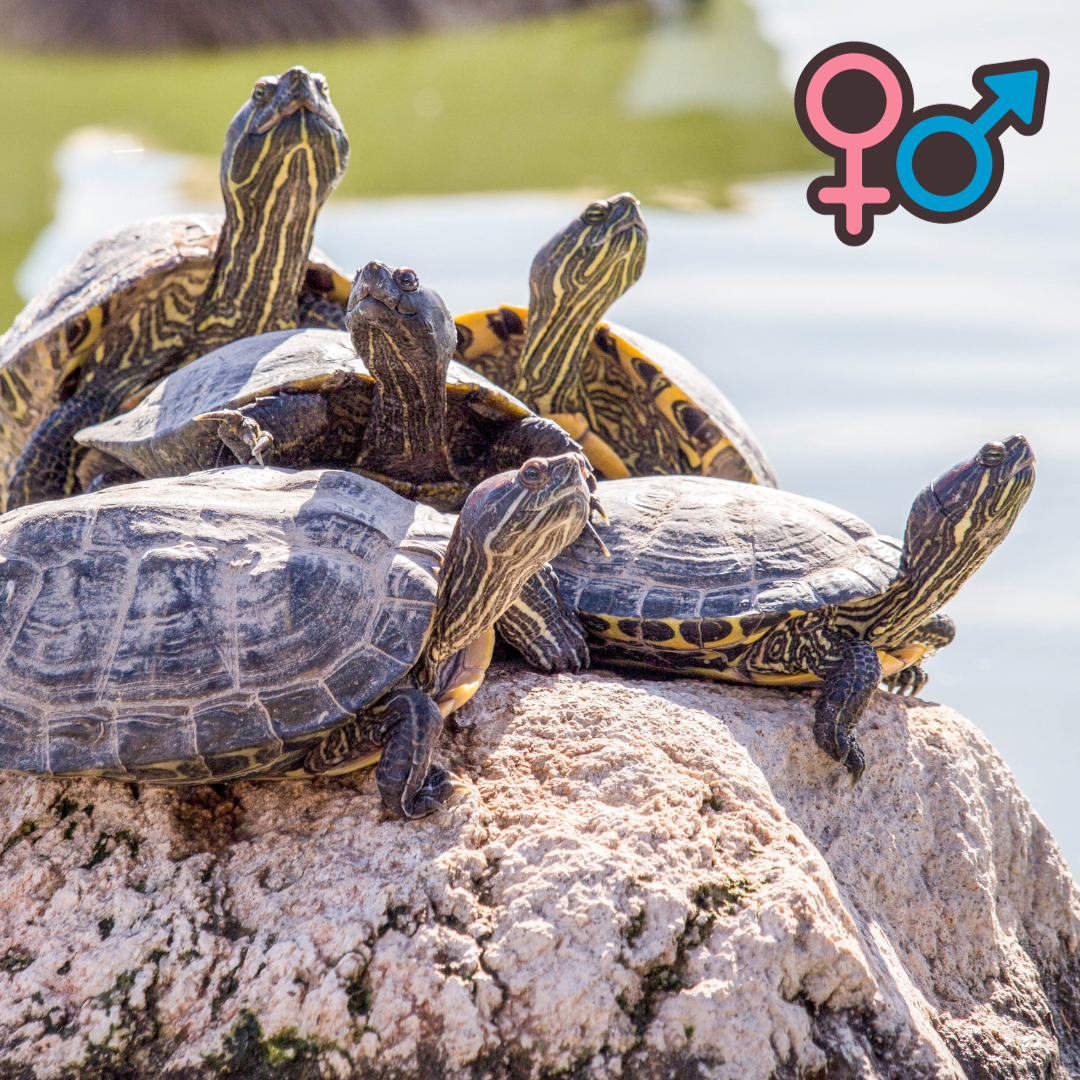Table of Contents
Introduction
Hey there, turtle enthusiasts! 🐢 Have you ever puzzled over “how to tell if a turtle is male or female?” As the proud parent of a box turtle and a curious 7-year-old nature explorer, I’ve spent quite some time investigating this shell mystery, and I’m excited to crack it open for you.
Over the years, we’ve learned that distinguishing males from females among different turtle species isn’t as straightforward as it is with many other animals. Size differences, markings, and even the tail can offer clues. Still, it’s often a combination of these characteristics that helps to determine the gender. My daughter and I have often found it extremely difficult to tell one from the other! 🧐

In this post, I’ll share insights from my personal experience with our pet box turtles and a wealth of knowledge about other turtle species, from sea turtles to tortoises. Did you know some reptiles, including many turtles, have something called temperature-dependent sex determination? This means the incubation temperature of the egg’s environment can actually influence the sex of the hatchling. Cooler temperatures produce males, and warmer temperatures produce females. Fascinating, right? 🤓
From understanding when turtles reach sexual maturity to figuring out which ones grow larger (is it males or females?), there’s a lot to learn in the intricate world of these gentle, slow-moving creatures.
So, sit tight and join me on this expedition as we explore the many ways to distinguish males from females among these captivating breeds of reptiles.
Is it a Dude or a Dudette? How to Tell If a Turtle is Male or Female
While mammals give away their secrets rather easily, turtles like to keep things under wraps (or should I say, shells!). Just like a tricky puzzle, determining their gender can be quite the brain teaser. Little details, often subtle ones, will drop the hint. Having a pair, one boy and one girl, can be a real game-changer; it lets you play a fun game of spotting the differences!
In the sections that follow, we’ll dive deeper into each of the different methods of gender determination in turtles. We’ll cover everything from claws to tails to color and size.
Shell Secrets 🐚
Let’s start with the shell, the most eye-catching feature of these amazing creatures. The shell can offer some significant clues when figuring out how to tell if a turtle is male or female.
Shell length
Generally, in many turtle species, males tend to have smaller shells than females. It’s like the ladies are flaunting their roomy condos while the gents are cool with their compact bachelor pads! 😄 But remember, these are general observations, and there can be exceptions. Nature loves her variety, after all! So, while a lengthier shell might hint at a female turtle, it’s always good to check for other signs before making the final call. 😊
Plastron shape – Turtle’s belly
Male turtles, especially male box turtles, typically have a concave plastron shape – that’s the underside of the shell for those new to turtle lingo! 🐢 Males have this unique shape to better mount the female during mating. Female turtles, on the other hand, usually have a flat plastron. So, next time you observe a turtle, peek at its plastron!
To check the plastron, you have to turn over your buddy. Begin gently placing your fingers around the shell’s edges, ensuring a firm yet delicate grip. It’s best to keep your fingers away from the front and rear of the shell to avoid a surprise nip or scratch from your shelly friend! Now, slowly turn the turtle over – maintaining control is critical here. Always support the turtle’s weight to prevent any harm or distress. Once you have a clear view of the plastron, you can observe its shape and characteristics.
After the examination, gently return the turtle to its normal position.
Tail notch
Ah, the tail notch! If you check at the base of the tail, close to the body and the shell, you’ll typically find a small notch or cut-out in males, a V shape. This notch is the exit point for the reproductive organ, hence its absence in females. 🐢 From my many turtle-observing escapades, I’ve found this a pretty reliable sign! But remember, patience is key – you can’t rush nature’s secrets! 😊
Claw Clues 💅
Now, moving on to some other intriguing features—let’s talk about claws and cloaca! Male turtles, including the sea turtle, generally have long, sharp claws on their front feet. Over a decade of observing these creatures has taught me that they use these claws for courtship rituals and to compete with other males. 😏
Cloaca Checks ✔️
And then there’s the cloaca – the multipurpose opening used for mating and laying eggs. In male turtles, the cloacal opening tends to extend past the edge of the carapace (the top shell). In contrast, females have a cloacal opening closer to the body.
Tale of the Tail 📏
The tail size can also indicate whether you’re dealing with a dude or a dudette. Males tend, in general, to have longer, thicker tails. The tail length in female turtles is typically short and doesn’t extend past the edge of the carapace. I’ve also noticed that male sea turtles and male box turtles often have cloacal openings further down the tail. Fascinating, right?
Species-Specific Signals 🚦
Finally, let’s talk about some species-specific clues. In some species, like the red-eared sliders and painted turtles, males and females are sexually dimorphic. This means you can often tell male from female by size or color. Male-painted turtles and red-eared sliders are usually smaller than females but boast longer claws and tails. They also have notably red eyes, while females have brown. It’s always a thrill to determine these gender clues in the wild! 🕵️♂️
Wrapping Up
Alright, buddies, here’s the scoop on how to tell if a turtle is male or female. It’s all about putting together the puzzle pieces. 🧩 Don’t just rely on one sign; instead, observe and cross-reference multiple indicators. For example, you might come across a sea turtle with a short tail and think, “Aha! A female!” But hold your horses! 🐴 Remember that hatchlings and young turtles also have short tails, regardless of sex. So, you gotta wait and see if other signs, like claw length or cloaca position, become more apparent over time.
In my years of turtle-watching, I’ve seen that the sand can be a subtle storyteller. 🏖️ Female turtles, for instance, will often leave different tracks in the sand than males when they come ashore to nest. I’ve spotted many female sea turtles on their nesting journey, their short tails barely visible above the sand.
So, remember, my fellow turtle enthusiasts, patience and observation are your best tools in this fascinating gender-determining adventure.
Happy turtle spotting! 🐢💚


